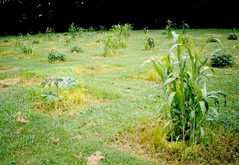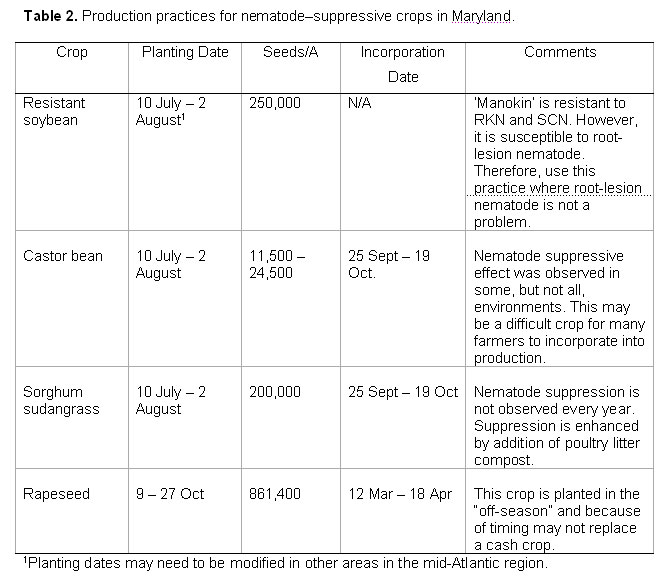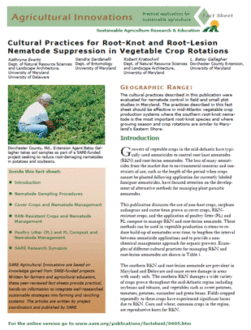
Use of cover crops is increasing in the mid-Atlantic region because they have been proven to reduce soil erosion and nutrient loss and improve soil health. Additionally, reductions in soil-borne and foliar disease may result from cover crop use. Nematode-suppressive cover crops provide the additional benefit of nematode disease suppression.
Two non-host cover crops that can be grown in the mid-Atlantic and may provide root-knot nematode population reduction are sorghum sudangrass and castor bean. In cropping system experiments in Maryland, sorghum sudangrass grown annually as a green manure crop following a nematode–susceptible potato or cucumber crop reduced the RKN population as effectively as a nematicide application prior to production of a susceptible soybean cultivar. An annual green manure crop of castor bean also significantly reduced RKN, but annual inclusion of these crops is necessary to maintain reduced populations. In addition, results may be variable (i.e. the nematode suppressive effect is not observed every year) due to other environmental influences upon the nematodes.
Field procedures
Sorghum sudangrass cv. ‘Green Grazer’ (AgriBiotech Brand, Inc.) can be planted following an early season vegetable crop such as potato, processing cucumber, pea or snap bean. Planting seed at 20 lb/acre in mid to late July produced adequate biomass to suppress RKN. For best suppression, the sorghum sudangrass crop should be chopped and incorporated into the soil in mid October. (Note: Although we used cv. ‘Green Grazer’, research throughout the U.S. has shown that other varieties also should work well.)
Castor bean cv. ‘Mall’ grown for green manure is seeded at a relatively low density-11,500 seeds/acre in mid to late July following spring vegetable crop production. Again, approximately three months of growth should produce adequate biomass to suppress nematodes. Castor bean should be mowed or chopped and the biomass tilled into soil in mid October. Table 2 provides planting dates and seeding rates for these cover crops in Maryland.

